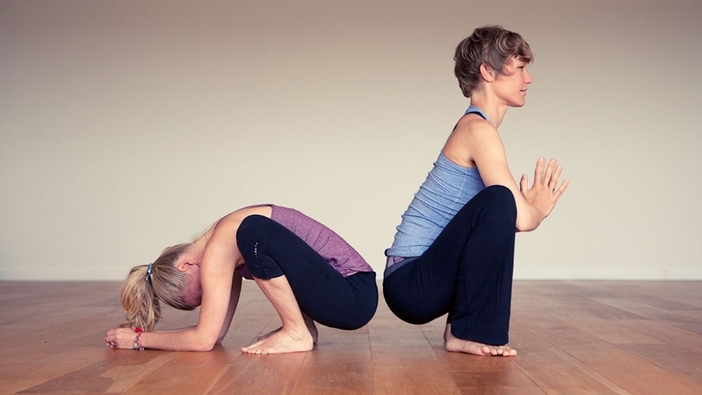
Balancing the Yin and Yang in your practice
The Taoist concepts of Yin and Yang describe the two qualities or energies present in everything; from our food and our bodies, to the seasons and the world around us.
Yin qualities can be thought of as more internal, passive, cooling and downward while Yang is more external, dynamic, warming and upward.
Yin and Yang are relative to each other and one cannot exist without the other, you can’t have night (Yin) without day (Yang) for example. The two make up the whole.
Do you have more Yang or Yin in your life?
Many of us live active, Yang-oriented lives with lots of external stimulation, long working hours and trying to get everywhere fast.
This isn’t all bad news, we get things done and have a lot of fun on the way, but eventually we can run the risk of become overstimulated and experience burnout or health problems. So we need to balance this with more Yin activities - taking some time out when we can for quietness and calmness.
Yin and Yang in our yoga practice
Yang Yoga for strength, fitness and flow
We can also think of our bodies and our yoga practice in terms of Yin and Yang. Styles of yoga which are more Yang are those with rhythm and repetition like Vinyasa Flow, Ashtanga and Anusara. With rounds of Sun Salutations and dynamic and strengthening poses or sequences working on the Yang tissues - the muscles, blood and skin. These styles of yoga are great for building strength and fitness as well as bringing a whole host of other benefits of yoga.
Yin Yoga for flexibility, mindfulness and softness
Relative to this, Yin aspects of yoga focus on the deeper, denser tissues of the body - the joints, bones and connective tissues. We hold poses for longer periods, releasing into them with mindful awareness of the sensations and thoughts which arise. When we think of the Yin aspects of yoga of course we probably think first of Yin Yoga but Restorative Yoga and meditative slow flows are also Yin orientated. We explore these different Yin aspects in our Yin Yang Yoga Program.
Most of us will prefer one style more than the other but we all need to include both to have a well-rounded balanced practice.
Combining Yin and Yang
By bringing both Yin and Yang aspects in each class we can experience all the benefits of both styles and we can use these in different ways.
Sometimes if we have a busy day and then go straight into our practice we can keep on that Yang path - pushing in the same way we have been doing all day. So starting with some Yin can calm and clear the head, pressing the reset button before we start and bringing our attention down from the mind and into the body for our Yang practice. It also helps to start with some Yin poses if you are feeling tired, maybe like not practising at all!
On the other hand ending with Yin can release any tension you might have built up during the Yang part of your practice, for example in your shoulders. Finishing with Yin grounds you, relaxing and calming the nervous system, in the same way as finishing a class with Savasana does.
Cultivate a balanced Yin Yang Yoga Practice with our 3 week Yin Yang Yoga program
In this 3 week guided online program you'll find three Yin Yang classes a week.
Each class includes both
- dynamic, active sequences working on a muscular level for building strength and fitness
- and slower quieter practices working deeper on the joints and connective tissue and calming the nervous system.